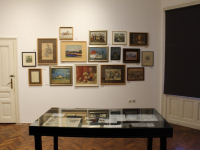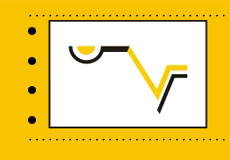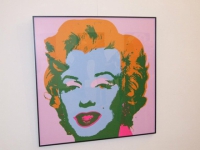
Legacy of the gallery - permanent exhibition
01.01 - 31.12.2021
...
Nebojsa Milenković (curator, Museum of Contemporary Art of Vojvodina, Novi Sad)
Dr.
Vinko Perčić Gallery: Modernity as a Guarantee of Institutional
Vitality and Relevance
About
Perčić, a doctor and a collector
Apart from convincingly testifying to an era and its values, the art and life case of the famous Subotica doctor and collector Dr. Vinko Perčić is a suggestive and on several levels indicative story about ourselves. Before delving into the topic, I will remind you very briefly of the key biographical details
Dr. Vinko Perčić was born in Hrvatski Majur on February 20, 1911. He was educated in Subotica, then studied in Graz and Paris. Having gained the doctor of medical sciences title, after an internship in 1938, he began working at the Subotica Hospital in the Internal Medicine Department. Following World War II, in 1947, he was appointed head of the Department. He specialized in London and Washington in the fields of gastroenterology and endoscopy.
After returning to Subotica in 1959, he continued his medical career. He significantly established himself as a scientist and researcher, advancing the field of gastroenterology by initiating the establishment of an international conference of Internal Medicine Days held in Subotica from 1961 to 1974. He spent his whole successful medical career in the hospital in Subotica, where he retired in the early eighties. He died in Subotica on November 24, 1989.1
Through his scientific and organizational work, but also direct medical practice, Dr. Perčić made his city the center of gastroenterology in the entire SFRY. He had first more direct contact with art, which, by his own admission, remained his greatest passion and love until his death, during his studies in Graz - but also numerous professional developments, i.e. his staying in art metropolises such as Paris, London (where Perčić worked as an official doctor of our country’s diplomatic mission), New York and Washington, where he formed his own artistic taste by visiting large museums. Apart from working at the Subotica hospital, as one of the leading European gastroenterologists, Perčić also opened a private practice2, and since he did not marry or have children, he invested the money he earned in buying works of art - both from the artists themselves, by exchanges, and by visits to auction houses like Sotheby's and Christie's. He came into contact with painters from his homeland thanks to his acquaintance with colleague doctor Ferenc Kinka3, with whom he visited many colonies (among others, the locally significant ones in Bačka Topola, Ečka or Senta). Being curious and discoverer in nature, Perčić collected works by many great European artists (mainly drawings and graphics) such as Albrecht Dürer, Rembrandt van Rijn, Francisco Goya, Paul Cezanne, Pablo Picasso, Edouard Monet, Henri Matisse, Paul Gauguin, Juan Miró, Marc Chagall, Fernand Léger, Oskar Kokoschka, Victor Vasarely and many others. His collection also included paintings and sculptures by important Yugoslav artists such as Ivan Tabaković, Vlaho Bukovac, Ivan Meštrović, Petar Lubarda, Jovan Bijelić, Marko Čelebonović, Milo Milunović, Krsto Hegedušić, Ignjat Job, Ivan Generalić, Paja Jovanović, Uroš Predić. During his life, Dr. Perčić was a frequent and convenient model to many artists - in Dr. Vinko Perčić Gallery in Subotica 9 of his portraits are kept, while in the Perčić Collection in Klovićevi dvori Gallery in Zagreb, there are 168 portraits of Perčić, signed by Milan Konjović, Božidar Jakac, Pal Petrik, Josip Generalić, Arpad G. Balaž, Ištvan Sajko and others. After a flood in the house at 22 Maksima Gorkog Street in Subotica, which Perčić initially bought to use it a practice and then intended to house his collection, which he intended to donate to his own city - provided he was surrounded by his works of art until his death:
My attempts lasted for almost ten years ... They walked me for years from one institution to another, I wrote a large number of letters to various institutes, secretariats and commissions. Rarely has anyone deigned to answer me. When I came in person, they made empty promises…4
After failed negotiations with the Matica Srpska Gallery in Novi Sad, in 1989, Perčić donated a significant part of his collection, consisting of works by foreign and Yugoslav artists, to the city of Zagreb. The collection is today kept in the "Klovićevi dvori" Gallery5. This news caused quite a shock in Subotica, triggering numerous media provocations against city officials6, but that same year Dr. Perčić died. Despite the misunderstanding of those who ran the city at that time, Dr. Perčić, however, expressed his love for the city in a will in which he left the second part of the collection - made up mostly of intimate works and works by local painters, numerous objects of applied art, but also his study - to Subotica. The moment when Subotica finally corrected the wrong committed against its famous fellow citizen was June 27, 2006, when the Municipality of Subotica made a decision to establish an independent museum-gallery institution "Dr. Vinko Perčić" Gallery7 the seat of which is still in the neo-baroque house at 22 Maksima Gorkog Street, which the collector bequeathed to the city in which he lived8. These are, therefore, facts, and no matter how unpleasant they are for us - they should be confronted. If not as a lesson for the future - since patrons like Perčić are relatively rare, not to say completely extinct, in the time in which we live - then certainly as a pledge for history and testimony to our immediate artistic past.
The (New) Life of the Perčić Collection
Today, centers and peripheries more or less play in the same league.
Karine Vonna9
Guided by the principles and discovery spirit of Perčić himself - his tolerance, openness, collecting and curious nature, and willingness to take risks, where art itself becomes a figure, that is, a form of thinking and living - "Dr. Vinko Perčić" Gallery begins its new life in 2007 when visual artist and performer Spartak Dulić was appointed director and curator of this institution. Dealing with the always current dilemma of how to breathe new life into already rounded and defined museum collections, instead of the seemingly easier, simpler and risk-free position of heritage custodian - as a manager, Dulić initially chose a riskier, incomparably more beneficial for the institution, more active approach, in which the museum/gallery is not only a mere collector but also a place generating new knowledge and meaning. Aware of the dilemmas as to whether contemporary art can actually erase the boundary between art and life, as claimed by German art historian Hans Belting, or should "move" into the interspace, that is, the split existing between them, according to the American painter Robert Rauschenberg – apart from working on the museological processing and preservation of Dr. Perčić's legacy, Dulić invests his by no means negligible energy, knowledge and enthusiasm in his efforts to make the Gallery a living interpretation and presentation, exhibition, discussion and educational center. Seeking to balance between heritage preservation on the one hand, and the presentation of contemporary trends on the other hand - not neglecting the context of institutional activity, both international and local, or even local-patriotic - the "Dr. Vinko Perčić" Gallery program activities are aimed at strengthening the taste and sense of awareness of the Subotica community. According to the famous Beuys’s principle, in the final outcome of this complex cultural and artistic game, the city itself becomes a work of art - much visible on the regional art map, which is gladly visited by well-known and recognized visual artists from the entire former state in which Perčić worked as a collector to exhibit with a sense of personal honor. Hence the process of (self) understanding of the institution being proportional to the actual effects of its sociality, based on the production and generation of public knowledge.
The art gallery, therefore, becomes an instrument of culture - a space to exchange information, have dialogues, produce meanings... By visiting the Gallery, the viewer himself is no longer a passive consumer - but someone who actively participates, learns, understands... If I paraphrase the artistic statement of the most renowned artist Subotica has ever had, here I certainly mean Slavko Matković - I could describe the above situation with an artistic statement: I don't view art, I understand art!
Through about seventy program activities held so far (exhibitions, lectures, promotions and other speech and audio-visual programs) in "Dr. Vinko Perčić" Gallery, we can follow at least four parallel trends that have positioned this institution among the most agile regional art platforms. These four branched and well-thought-out thematic circles can, conditionally speaking, be described as:
-
Innovated and continuous exhibition of works from the Perčić Collection Permanent Exhibit through exhibitions such as Stipan Kopilović: 130 years since the birth of the painter (2007), Ivan Tikvicki Pudar, Landscapes (2007), Bela Duranci: Painting between two wars (2010), Vinko Perčić's last collection sacrament (2011), Dr. Vinko Perčić Collection: Selection from the Gallery legacy (2018) and the Permanent Exhibit itself.
-
Exhibitions and events presenting the Subotica art scene (with an emphasis on younger artists) pointing to its regional and international rise: Suzana Vuksanović: SUBcOnTinental CAb (2007), Ksenija Kovačević and Ratka Lugumerski: Nights of Museums - Anecdote Amoreuse (2008 ), Sava Halugin: Nights of Museums - Adumbrations (2011), Bálint Szombathy: We Were Heroes - Hősök voltunk 1971 - 2014 in cooperation with the "Likovni susret" Modern Art Gallery (exhibition awarded the Politika Award "Vladislav Ribnikar" for the best exhibition in Serbia during 2014) or Maja Rakočević Cvijanov: Authentic (2015).
-
Solo exhibitions of already established artists from the entire former Yugoslavia region (and beyond) such as Zoran Todoroviƒá (2009), Vladimir Nikoliƒá (2010), Milica Tomiƒá (2010), Slaven Tolj and Sandro ƒêukiƒá (2010), Zoran Naskovski (2010) ), Kristian Ko≈æul (2011), Vlasta Delimar and Milan Bo≈æiƒá (2011), Uro≈° ƒêuriƒá (2013), Ilija ≈Ýo≈°kiƒá (2015), Goran Trbuljak (2016) or ≈Ωeljko Kipke (2016). The exhibitions Salvador Dali, Infinite Minute (2011) and Andy Warhol: 15 Minutes of Fame (2012) can be conditionally added to this group.
-
Programs that, along with undoubted artistic value, have a pronounced documentary and educational character such as Rooms with a View (2009), Želimir Žilnik: Between Putin and Obama (2009), Homage to Painting (2013), Love of Subversion (2013), The Other Face of Democracy (2014), Spaces of Memory (2018), The Body as a Medium (2018) and the Drawer's Contract by Branislav Brankov (2019)… There are also presentations of related art platforms from all over SFRY, such as the Novi Sad Art Clinic (2008), Ljubljana Little Chapel (2009), the Belgrade Independent Art Association Remont (2009) and the contemporary art platform Kiosk (2014), the art associations Croart and Krupart (2017), the Zagreb youth magazine Polet (2018), and others.
Questions to Answers - instead of a conclusion that, in fact, does not exist
These exhibitions (as well as the unmentioned ones), historically-artistically relevant and serious in cultural and production sense, held under the organizational patronage of "Dr. Vinko Perčić" Gallery make us question if great artistic utopias, similar to the avant-garde ones, are even possible today, and can domestic museum and gallery institutions be identified as bearers of utopian potentials? Have and to what extent these programs resulted in a true strengthening of the institutional status and increased visibility of the Gallery itself, is it borne in mind that at the beginning of our story it had three and today it is reduced to only one employee - that is, only the director, who is at the same time his own employer?! If we view it as a performative play, or an institutional experiment, this situation might even be considered stimulating – however, undisturbed, so-called systemic functioning still requires stronger and more reliable social guarantees. If the assumed system does not exist, isn’t our entire cultural existence too based on the creation of a fundamentally false image - and is it the so-called white lie that we obviously need? To what extent do today’s institutions and artists existing in Zabatka, Szent-Mária, Maria Theresiopolis, Maria-Theresienstadt, Szabadka or present-day Subotica - operating within its complex multinational, multilingual, religious and even civilizational (sub)systems – see the fact that New Art in Serbia was initially born and took place in this city as an essential advantage, or can we observe this data as a historical ballast of the unattained better (artistic) past? Does the culture of memory at the same time imply the catastrophe of forgetting? The questions can certainly come in a series and multiply indefinitely - and almost any of them could be considered rhetorical. However, without losing sight of the awareness that in today's art, stable and forever occupied and mapped territories are not possible and that on a global level, all definitions that pretend to reflect the final truths and judgments are overcome the moment they are uttered - by simultaneous movement from a static to a moving image or artistic event and back - "Dr. Vinko Perčić" Gallery has affirmed itself as a certainly relevant space of constant confirmation, reconsideration, loss and regain, constitution and construction of social, cultural and artistic identities. Modernity is therefore becoming an ally to the traditional, and the eternal circulation of artistic energies is becoming the only reliable guarantee of the preservation of durability, (in)stability and its institutional vitality and relevance.
In Novi Sad, October/November 2020
1
Biography
of Dr. Perčić taken from:
http://www.zbirkapercic.info/O_dr_Vinku_Percicu.aspx,
accessed on October 31, 2020.
2
In
addition to his family wealth, there were rumors of the penicillin
among the "secrets" of his then-sizable fortune - then a
miraculous cure for tuberculosis that had been incurable until the
discovery of penicillin, and which only the wealthiest could afford.
3
Dr. Ferenc Kinka
is also responsible for the discovery of the work of famous
Hungarian graphic artist Szalay Lajos (1900 - 1995), also from
Subotica - a great traveler and art researcher, who left a
significant mark in both Hungarian and Argentine art. As an
anecdote, there is a saying by Pablo Picasso that "in the 20th
century there are two good graphic artists: The first is Szalay
Lajos and the second is me." See:
https://gradsubotica.co.rs/dedovina-velikog-umetnika-na-prozivci/,
accessed on November 2, 2020.
4
Interview
with Dr. Vinko Perčić,
Start, Zagreb, (date unknown) 1989.
5
See:
http://www.zbirkapercic.info/Default.aspx,
accessed on November 6, 2020.
6
A.
Isakov, Once
again about legates: Silence descends on the city,
Subotičke novine, June 23, 1989.
7
Until
that moment, works and objects from the Perčić collection enjoyed
the protection given by the Subotica City Museum, where, under the
name "Dr. Vinko Perčić" Homeland Gallery, they
functioned as an annex.
8
The exhibition rooms are
full of exhibits displayed with the aim was to present the
collector’s fields of interest and those artists with whom he
communicated or were in friendship. The selection of 67 names and
130 works from the Gallery’s legacy is composed of paintings and
artists from the period until 1914 (Stipan Kopilović, Jelena Čović,
Béla Farkas, Angela Mačković, Sándor Oláh). From the period
between 1914 and 1945 the following artists are presented in the
collection: Árpád G. Balázs András Hangya, László Szilágyi,
Jenő Lenkei, Géza Hódi, István Nagy. There are also some
outstanding artists of the 1930s, participants of the Drawing
School: Imre Winkler, Gustav Matković, Endre Faragó, Gábor
Almási, Ivan Tikvicki,Marko Vuković. Some of the names are
remembrances to friendships with well-known artists: with Oskar
Nemon in London, Nesto Orčić in Zagreb and Petar Lubarda and
Zlatko Prica.
Downloaded from: http://www.galerijapercic.com/,
accessed
on November 3, 2020.
9
K.Vonna,
Origin
and originality,
in: On
Criticism – Between art and the public in Europe,
Apollonia – European art exchanges, Strasbourg, 2005, p.16






